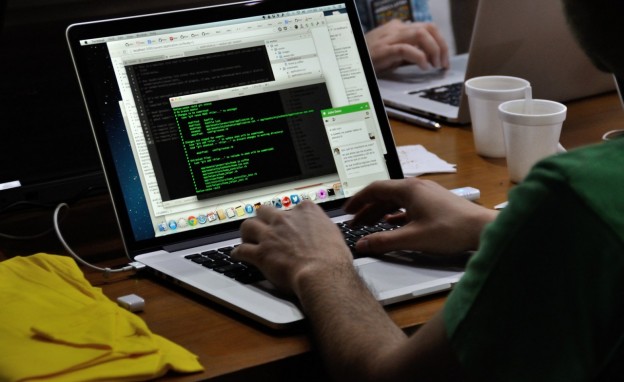Young journalists hear enough bad news: The industry is in crisis, print journalism is dying, you’ll never find a job. But a booming bright spot remains: data journalism — new tools, new teams, new promise for hard-hitting investigative work and innovative reader engagement. So last May, after a few years at my college newspaper and sporadic freelancing, I signed up to be part of the movement.
I enrolled in Columbia University’s Lede Program, a three- or six-month post-bac certification in coding and data practices, launched last year to teach journalists and social science students how to turn data into narrative.
“Data journalism,” I’ve learned, is an umbrella term that includes the full spectrum of steps involved in working with data with the help of computers: finding a large data set (sometimes by scraping or using an API call), analyzing it, and representing it visually. Today, it is possible to be a data journalist using tools that don’t involve coding at all — many journalists do impressive work using Excel and a growing number of free or open-source visualization tools, like Tableau Public.

Photo by Michael Himbeault and used here with Creative Commons license.
But even as more tools become available, learning to code still matters. While it can be hard to think outside of the box with tools that offer limited options, coding allows you to build anything you can imagine. Starting from scratch with code gives you the benefits of a blank canvas.
Hard but worth it
Learning a few programming languages is like learning how to use the tools in a toolbox: Different languages are better suited to building different things. Once you know how to build, you can make a box or a boat or a skyscraper. That’s what makes journalism in the digital age so exciting: We are no longer constrained by paper or ink, and the opportunities for finding and displaying information are virtually endless.
But here’s the catch: Coding is hard. Really, really hard.
I came into the Lede Program with no previous experience other than a little Visual Basic and HTML I’d learned in middle school that left me interested enough to know I wanted to pick it back up. Invigorated by the recent wave of articles boasting that “anyone can code” and “everyone should code,” I decided to take on this program.
Programming was challenging in ways that I did not expect. First, there’s the challenge of actually learning a language, complete with syntax, sentence structure and vocabulary, as you would with any foreign language like French or Mandarin. But more importantly, learning to code stretches your mind in new directions by requiring you to think like a machine. You must approach problems in a hyper-logical, linear fashion, translating the vision for a project into small steps of “ifs” and “elses,” and considering every possible outcome to prevent the program from crashing.

The Geotaggers World Atlas. Data visualization courtesy of Eric Fischer and used here with Creative Commons license.
Developing a code sense
As someone with little background in math, developing programming intuition was the hardest part, and only possible after working on many different problems until they made sense. We started learning Python in the summer, and within a month-and-a-half, we were already using code to develop journalistic projects, with classmates looking at patterns in data ranging from Supreme Court decisions to consumer board complaints. But it wasn’t until the fall when we took on C and C++, the statistics language R, and the visualization language D3 that things really started to click.
At the end of the day, learning to code is only part of becoming a data journalist — it’s key to analyzing vast swaths of data faster than ever before and presenting your findings. But the “journalism” half of the term is not too different from beat or investigative reporting: It requires critical thinking, a good story, and asking the right questions.
Would I take the program again? Yes. The tools of the trade are so specialized that it was worth taking the time to learn in a classroom setting, with all the resources and institutional support that includes. I not only gained literacy and familiarity with the fascinating field of computer science and its intersection with journalism, but also feel empowered by the difficulty of the skills I learned.
I’m still very much a beginner coder and growing as a journalist, but the lessons I learned through this program have opened my mind to a new way of thinking, a new way of solving problems, and a new way of bringing journalism into the digital age.
Carolina Millán Ronchetti is a journalist based in New York and a recent graduate of Columbia University’s Lede Program. Formerly the Editor-in-Chief of the McGill Tribune, her work has appeared in publications including the Globe and Mail and Indian Country Today. In 2013 she received the Award for Excellence in Higher Education Journalism (student category) from the Canadian Association of University Teachers.


Good summary! I’m surprised more universities don’t offer these types of programs.